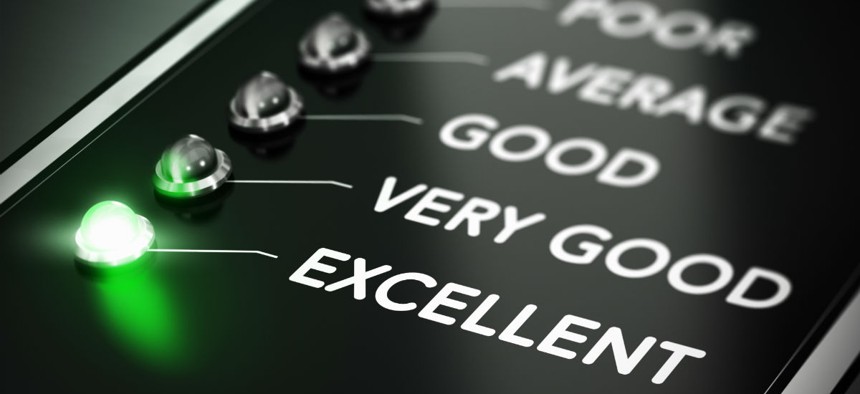
Government’s Customer Experience Comeback
The Trump administration wants agencies to match or exceed the service people receive in the private sector.
With the release of the fiscal 2019 budget proposal on Feb. 12, the White House sent a strong signal that improving customer interactions with government will be a major management priority.
The administration plans to release the president’s management agenda this month, with specifics on how it will ensure government is accountable to the public, according to the budget proposal. It will include “concrete goals and trackable metrics” in at least six “goal areas,” one of which is customer experience.
On that front, the administration “will ensure that Government no longer lags behind the private sector on customer experience,” according to the budget proposal.
The government has been heading in the right direction on customer experience over the past few years. Citizen satisfaction with federal government services increased for the second consecutive year, according to the most recent American Customer Satisfaction Index, a national measure of customer satisfaction.
The 2017 numbers released in January show satisfaction with federal services is now at an 11-year high, rising to 69.7. It’s a welcome change from two years ago, when the ACSI showed customer experience in government at 63.9, an all-time low, when compared with industries and sectors the index measured. While the progress is encouraging, the government has a long way to go to provide the consistent, easy and effective services citizens increasingly expect.
The focus on customer experience in the fiscal 2019 budget proposal builds on the previous administration’s efforts. Those included launching the U.S. Digital Service to bring more than 200 talented technologists from the private sector to help agencies improve government services, and recognizing outstanding achievements by establishing a president’s customer service award.
The fiscal 2019 cross-agency priority goal expands the focus from customer service to customer experience, recognizing the importance of taking a comprehensive, holistic approach to improving citizens’ interactions with government.
Customer experience is more than ensuring that employees are friendly and helpful to the public. It’s about improving every step of a citizen’s dealings with government, from finding information about services to applying for benefits to tracking the status of a request or application. And it includes identifying and resolving issues that arise along the way, so people can easily obtain the services they need, whether they are online, at an office or on the phone.
A customer experience focus also entails knowing whether the government’s customers are satisfied and understanding why. Agencies need to measure the specific aspects of an experience that drive satisfaction for their customers, for example whether it’s easy for customers to complete an application and if an agency’s service is effective. Feedback on citizen surveys also can provide valuable insights into the root causes of customer ratings. Agencies need to go beyond general customer satisfaction surveys and get actionable, transaction-level customer data they can mine for meaningful insights to improve how they operate.
As agencies endeavor to improve customer experience, many also are seeking to operate more efficiently and lower the cost of providing services. These objectives often go hand in hand. For example, as agencies strive to reduce call volume by sending customers to lower-cost self-service channels, customers gain round-the-clock convenience.
New agency priority goals posted on performance.gov provide insight into specific improvements some agencies plan to target. Nearly half of the 21 agencies that have posted priority goals on the site included a goal of improving customer experience or reducing a backlog affecting citizens.
The Federal Student Aid office plans to improve the experience of citizens who call with questions about a loan, aiming to reduce callers’ average wait time, decrease the number of callers who hang up while on hold, and expand and standardize hours of operation for call centers.
The Department of the Treasury also plans to reduce by 21 days the time it takes to approve alcohol and tobacco business permits—now 96 days on average—among other improvements.
Can government services ever meet the high expectations of today’s citizens? With hyper focus on those they serve, agencies can make great strides in improving customer experience, which in turn will advance their ability to achieve their mission goals. That link between customer experience and mission outcomes is why the fiscal 2019 goal on customer experience is so critical.
Eric Keller is a senior program manager for research at the nonprofit, nonpartisan Partnership for Public Service.
Kathy Conrad is the director of digital government at Accenture Federal Services. She works with the Accenture Federal Digital Studio to help agencies use design thinking and service design to solve complex challenges, create great experiences and deliver mission outcomes.






